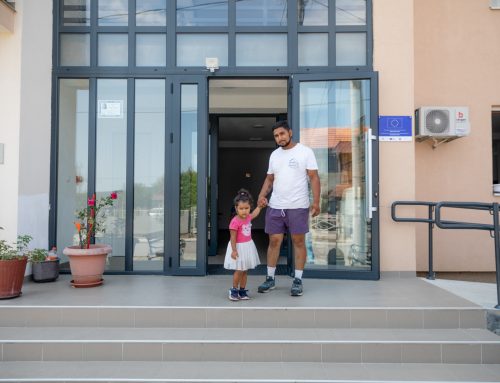As of spring 2015, patients of Krusevac hospital will be able to access health care services in a faster and easier manner thanks to single information system worth 200.000 euros within an EU-funded programme. Practically, this means that patients will not be required to have a referral written on paper, but will receive it electronically.
Once at a specialist’s office, neither a patient nor a physician would have to deal with paperwork: every single referral for further examination will be sent to patient electronically, while test results will be sent back to physician’s office in the same manner.
Project Integrated Health Information System (EU-IHIS) is financed by the EU with 2,5 million euros out of IPA funds. The Project foresees the introduction of a single health information system in 19 healthcare institutions across Serbia.
From the start of implementation up to the end of November 2014, Krusevac General Hospital was one of 15 healthcare institutions that saw the introduction of hospital information system (HIS).
General Hospitals in Cacak, Pirot, Kikinda, Smederevo, Pancevo, Paracin, Cuprija, Sombor, Prokuplje, received the same information system, as well as Institute for Oncology and Radiology of Serbia, Rheumatology Institute “Beograd”, University Children’s Hospital, and Clinical Hospital Centres Zvezdara and Bezanijska kosa.
Implementation of the system is ongoing at Institute for Orthopaedic Surgery “Banjica”, Clinical Hospital Centre Zemun, Specialized Hospital for rehabilitation and orthopaedic prosthetics, and departments of internal medicine at the Clinical Centre in Kragujevac.
IHIS project should enable patients to obtain electronic health records, while healthcare professionals should be given an easier access to data.
In the future, patients will also be able to directly participate in eHealth, although this will require full scope and a systemic regulation of the approach. Patients will then have access to their medical records and will be able to keep track of their interaction with health system, that would provide them insight into their health condition as well as their current and past diagnoses and treatments.

Test use of electronic health records are currently ongoing at selected healthcare institutions as well as further development of the system which will be formalised through Law on Health Records and StatutoryRecords in the Field of Health.
HIS currently introduced were developed through World Bank projects. The Delegation of the European Union to the Republic of Serbia has donated additional 1,240 computers and 940 printers to the EU-IHIS Project beneficiary hospitals in order to enable more comprehensive use of the hospital information systems (HIS).
Krusevac Hospital, that had previously introduced a similar system into its surgery department in 2005, applied for IPA funds so as to equip the whole health system with state of the art IT programmes.
In order for IHIS to take root, it is necessary that other health care institutions introduce it as well. One of project’s goals is to improve organisation of work activities and enable administrative services to check employees’ operation and occupancy of an institution.
Project ultimate goal is to promote patient health care and public health system, as well as a rational use of funds and personnel.
“Programme is easy to learn and important particularly because it cuts administration. For example, I need a minute and a half to enter the data from health card into the protocol, while data processing takes ten seconds,” says Jelena Budimcic administrative nurse at the orthopaedic clinic of Sombor Hospital.
The EU-IHIS project is jointly carried out by the Serbian Ministry of Health and EU. The World Health Organization (WHO) for Europe is in charge of the project implementation through the WHO Country office in Serbia with administrative support of the UN Office for Project Services (UNOPS).
The project will last until 2015 and will use positive experiences and results of previous EU and World Bank projects in this area.
More about the project: www.eu-ihis.rs



